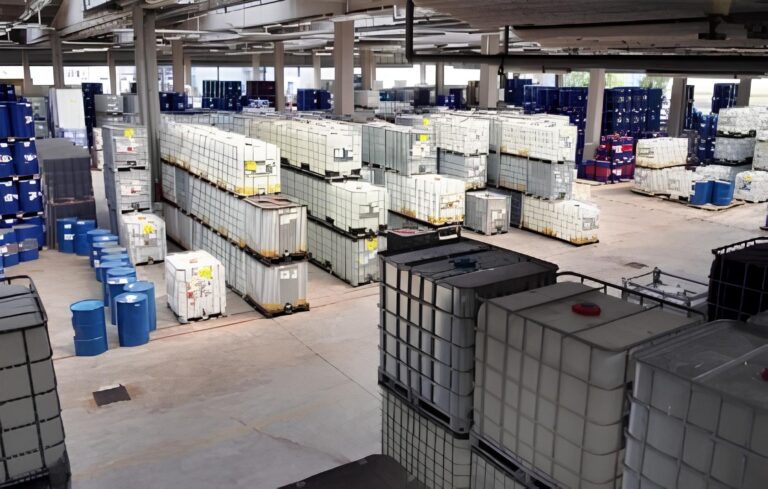Transforming Manufacturing Operations with RFID Automation
Unlock Efficiency with AtomIQ RFID Automation

In an era where speed and precision define success, small warehouses face a unique paradox: they must compete with larger competitors while managing tighter budgets, smaller teams, and fluctuating demands. Traditional methods like spreadsheets or paper-based tracking often fall short, leading to errors, delays, and missed opportunities. Enter the modern warehouse management system (WMS)—a tool no longer reserved for sprawling distribution centres. Today, purpose-built solutions cater specifically to the needs of smaller facilities, offering features that simplify complexity without sacrificing capability.
This article explores five foundational features that empower small warehouses to operate with agility, accuracy, and foresight. By weaving these tools into daily workflows, businesses can transform challenges into strengths, ensuring they remain competitive in a fast-evolving market.
For small warehouses, inventory isn’t just a list of products—it’s the lifeblood of customer satisfaction. Real-time visibility ensures every item, from the fastest-moving SKU to the forgotten corner stock, is accounted for at all times. Imagine a scenario where a customer calls to check the availability of a product. With outdated data, you risk promising stock that’s already been allocated or missing sales opportunities because items are misplaced. A robust WMS eliminates this guesswork by providing a live view of inventory levels, locations, and movements.
How It Works:
Why It Matters:
Consider a small pharmaceutical distributor storing temperature-sensitive vaccines. Real-time visibility ensures vaccines are stored correctly, expiration dates are tracked, and stockouts are avoided during critical demand periods. This level of oversight isn’t just about efficiency, it’s about safeguarding reputation and compliance.
By transforming raw data into actionable insights, real-time visibility allows small teams to anticipate issues before they escalate, allocate resources wisely, and maintain customer trust through reliable order fulfillment.

Gone are the days of workers shuffling between cluttered desks and warehouse aisles. Mobile-first WMS solutions bring the power of automation directly to the warehouse floor via handheld devices, tablets, or wearable tech. This shift isn’t merely about convenience—it’s about redefining how tasks are executed, from receiving shipments to dispatching orders.
Key Applications:
The Human Impact:
A small apparel warehouse, for instance, might handle hundreds of SKUs across sizes and colors. Mobile tools allow staff to verify styles and sizes during picking, drastically reducing returns due to incorrect shipments. For seasonal workers, intuitive mobile interfaces shorten training time, letting temporary staff contribute effectively from day one.
By eliminating paper trails and decentralizing data access, mobile-first tools turn every employee into a node of efficiency, fostering a culture of accuracy and speed.

Small warehouses thrive on flexibility. One day might involve processing dozens of e-commerce orders, while the next could focus on bulk shipments for a local retailer. A rigid WMS forces teams to conform to software limitations, but an adaptive system molds itself to the warehouse’s unique rhythm.
Customization in Action:
Case in Point:
A boutique grocery warehouse might prioritize local deliveries in the morning and shift to e-commerce orders in the afternoon. Adaptive workflows allow managers to reconfigure the WMS to prioritize cold-chain items first, assign specific packing stations for subscription boxes, and adjust shipping carrier rules based on delivery timelines.
This agility not only improves operational fluidity but also empowers small businesses to experiment with new strategies—like offering same-day delivery—without overhauling their entire system.

Annual inventory audits are relics of the past. For small warehouses, shutting down operations for a week to count stock is a luxury they can’t afford. Modern WMS solutions embed cycle counting into daily routines, turning accuracy into a continuous, low-effort process.
How It Transforms Audits:
Real-World Benefit:
A small electronics warehouse might discover recurring discrepancies in a popular gadget’s stock. Cycle counting data reveals that the variance occurs only during night shifts, prompting a review of training protocols for temporary staff. Over time, this proactive approach reduces shrinkage and sharpens operational precision.
By making audits a seamless part of daily workflows, small warehouses maintain accuracy without sacrificing productivity—a critical balance for businesses operating on thin margins.

A WMS shouldn’t operate in isolation. From accounting software to e-commerce platforms, seamless integrations ensure data flows effortlessly across systems, eliminating redundant tasks and minimizing errors. For small warehouses, this connectivity is a force multiplier, enabling them to punch above their weight.
Integration Essentials:
The Bigger Picture:
Imagine a small warehouse specializing in organic skincare products. Integrations allow it to pull orders from its online store, reserve inventory in real time, and notify the fulfillment team—all while updating the accounting system with each sale. If a product runs low, the WMS triggers a restock alert to the procurement team, creating a self-regulating loop.
By breaking down data silos, integrations empower small teams to focus on strategic tasks rather than manual data entry, fostering growth without expanding headcount.

Choose a system that grows with your business. Modular platforms allow you to add features like demand forecasting or advanced analytics as needs evolve.
Complex systems hinder adoption. Opt for intuitive interfaces with role-based dashboards—e.g., pickers see task lists, while managers access analytics.
Beyond upfront fees, consider ongoing expenses like training, updates, and third-party integrations. Cloud-based WMS solutions often offer predictable subscription pricing.
Ensure the WMS for small warehouses works with existing tools (e.g., accounting software, e-commerce platforms). APIs or middleware can bridge gaps between systems.
Building a Future-Proof Foundation
For small warehouses, adopting a WMS isn’t just about keeping up—it’s about laying the groundwork for sustainable growth. The right system acts as a force multiplier, amplifying the strengths of a small team while mitigating limitations like space constraints or budget caps.
Real-time visibility ensures decisions are data-driven, mobile tools empower staff to work smarter, adaptive workflows accommodate market shifts, cycle counting sustains accuracy, and integrations unify disjointed processes. Together, these features create a resilient operation capable of scaling seamlessly, whether handling a holiday rush or expanding into new markets.
In a world where customers expect lightning-fast delivery and flawless accuracy, small warehouses can’t afford to rely on outdated methods. By embracing modern WMS capabilities, they position themselves not just to survive, but to thrive—proving that size is no barrier to sophistication.

Unlock Efficiency with AtomIQ RFID Automation
A Specialty Building Products Distributor Implements AtomIQ WMS+ Solution to digitize warehouse operations.
Leading chemical manufacturer improves end user experience and speeds up critical business processes.
Introducing AtomIQ AI Agent: Your ERP Now in Slack and Teams.